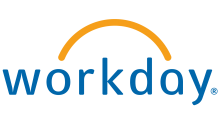The same data deluge applies to business—never before have companies and the executives who lead them had access to so much readily available data. But is this abundance of data leading to better decisions?
A survey of European C-suite executives, conducted by The Economist Intelligence Unit and sponsored by Workday, set out to answer this question. The results show that those who consider their organisations to be market leaders are more data-driven in their decision-making. But they also reveal widespread room for improvement in making decisions with data.
Driven by data
The use of data in decision-making is linked to good performance, the survey finds. Over half (55%) of respondents who describe their company as a market leader say that decisions within their organisation are based “purely” on data. This compares with just 3% of those who say their firm’s performance lags the market average.
Employees at high-performing companies are especially skilled at using data. Nearly seven out of ten respondents from self-described “market-leading” companies say their non-management employees are “somewhat” or “highly” effective at using data to support decision-making, substantially more than even those who believe they outperform the market (45%).
But the survey also highlights serious problems in using data.
Over four in ten (43%) respondents identify a “poor understanding of how to use data analysis” as one of the greatest challenges their organisation faces in using data to support decision-making (see chart 1). This human failing outweighs any technical hurdles: only 16% say that “poor technology” represents a challenge.

Many organisations are addressing this lack of knowledge. Over half (52%) of respondents say their company provides employees with training on how to use data to support decision-making. This still leaves almost half of the enterprises surveyed with no education plan in place, however. It may be telling that education is more common among self-described market leaders (55%) than those who say their performance lags the market (42%).
Some basic flaws in the use of data analysis to support decision-making are evident, however. A common error is only using information that is readily at hand. Three-quarters of respondents believe that their employees are guilty of only using information that is easily available. Two-thirds of C-suite executives surveyed confess to this bad habit.
Using only limited data is a classic blunder, according to Christoph Burger, who teaches decision-making at the European School of Management and Technology in Berlin. He offers the following example.
“Suppose I toss a coin and offer you €15 if it’s heads, but if it’s tails you lose €5. The expected value is a 50% gain for you, so you should play. But you must ask more questions. Can I pay you the winnings? Can you cope with losing €5? Is the coin manipulated? If we play 1,000 times you get an average, but we are only tossing once. All these issues must be considered before a decision can be made.”
Companies must therefore ensure that the data they draw on to make decisions represent a sufficient breadth of perspective. A simple way is to acquire more information, but that’s clearly an underused tactic: one-half of self-described “market leaders” supplement their internal data with information from external sources, compared with just 21% of market laggards.
Intuition versus analysis
How should intuition be used when making decisions? The survey reveals a wide spectrum of opinions. While 55% of executives from self-identified market leaders say decision-making at their organisation is based “purely on data”, the most common approach is to lead with data but to support them with intuition and experience.
Similarly, 52% of executives from market-leading organisations say their personal approach to decision-making is to “look at data analysis and take whatever course of action it suggests”. But among the total set of respondents, the most common tactic is to “look at data analysis but use my intuition to judge the course of action it suggests” (see chart 2).

Does an individual’s intuition improve their ability to use data in decision-making? The answer, according to Matthias Seifert, professor of decision sciences at the IE School of Human Sciences and Technology in Madrid, depends on the quality of the data and the context of the decision.
In a recent study Professor Seifert asked 180 people to predict how new songs would perform in the German and UK pop charts. One-half were music-industry experts, while the other half were graduate students with no specialist knowledge. He tested these human forecasters against computers. Some songs were by famous artists, others by newcomers.
When it came to artists with a strong track record—and therefore plenty of data to analyse—the computers beat the humans. For new artists, the humans beat the computers, which struggled to cope with the lack of data. This much we might expect.
But Professor Seifert found that in both cases the optimum results were obtained by combining expert humans with computers.
His research also shows that knowing when to follow the data and when to rely on intuition depends on the context. “For new product launches it makes sense to rely on intuition more as there are no past data to use,” advises Professor Seifert. “For stable industries, where we have sales data, it makes sense to rely more on forecasting models.”
Companies are collecting phenomenal amounts of data, and high-performing companies are adept at using them to make effective decisions. The danger is overwhelming employees, who are inundated with numbers but have little idea what to do with them. For companies looking to improve the way in which decisions are made, the survey suggests that taking formal measures to boost employee understanding—and access to external information—will provide the greatest return.






